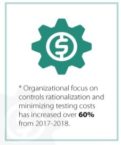SAP Fraud Management
Filter By
Browse By
- SAP Analytics and AI
- SAP Application Development and Integration
- All SAP Application Development and Integration
- SAP ABAP
- SAP ABAP Development Tools
- SAP ABAP Test Cockpit
- SAP API Management
- SAP BAPI
- SAP Basis
- SAP BRF
- SAP Business Application Studio
- SAP CMS
- SAP Design Studio
- SAP Development Tools
- SAP DevOps
- SAP EAI
- SAP EDI
- SAP Extension Suite
- SAP Fiori
- SAP Fiori Elements
- SAP Integration Suite
- SAP Low Code Application Development
- SAP Low Code Automation
- SAP Netweaver
- SAP Release Management
- SAP UI5
- SAP Web Application Server
- SAP Web IDE
- SAP Business Process Management
- SAP Center of Excellence
- SAP CIO
- SAP Customer Experience
- SAP Data and Data Management
- All SAP Data and Data Management
- SAP BW
- SAP BW/4HANA
- SAP Crystal Reporting
- SAP Data Archiving
- SAP Data Center
- SAP Data Governance
- SAP Data Integration
- SAP Data Migration
- SAP Data Quality
- SAP Data Services
- SAP Data Strategy
- SAP Data Visualization
- SAP Data Warehouse Cloud
- SAP DMS
- SAP Document Control
- SAP EIM
- SAP ETL
- SAP ETL Tools
- SAP HANA
- SAP HANA Administration
- SAP HANA Deployment Infrastructure
- SAP HANA Studio
- SAP Master Data
- SAP Master Data Governance
- SAP MDM
- SAP Enterprise Architect
- SAP Enterprise Asset Management
- SAP ERP
- SAP Finance
- All SAP Finance
- SAP Accounting
- SAP AR AP
- SAP Asset Accounting
- SAP Billing Systems
- SAP BPC
- SAP BRIM
- SAP Cash Management
- SAP Central Finance
- SAP Controlling
- SAP COPA
- SAP Cost Center Accounting
- SAP e-invoicing
- SAP FICO
- SAP Finance Automation
- SAP Financial Closing Cockpit
- SAP Financial Consolidation
- SAP Financial Planning
- SAP FX Risk
- SAP General Ledger
- SAP Global Tax Management
- SAP Hyperion
- SAP Order to Cash
- SAP Payment Processing
- SAP Profitability Analysis
- SAP Rebate Management
- SAP S/4HANA Finance
- SAP Universal Journal
- SAP Governance Risk and Compliance
- SAP Human Capital Management
- SAP Intelligent Technologies
- SAP Platform and Technology
- All SAP Platform and Technology
- SAP Business Technology Platform
- SAP Cloud Connector
- SAP Cloud Integration Platform
- SAP Cloud Migration
- SAP Cloud Platform
- SAP Cloud Providers
- SAP Cloud Strategy
- SAP Container Platform
- SAP Digital Asset Management
- SAP Digital Integration Hub
- SAP Digital Signature
- SAP HANA Enterprise Cloud
- SAP HEC
- SAP Hyperscalers
- SAP Infrastructure
- SAP Messaging
- SAP Smart Forms
- SAP Quality and Testing
- SAP Security
- SAP Spend Management
- SAP Supply Chain Management
- All SAP Supply Chain Management
- SAP APO
- SAP Asset Management
- SAP Business Network
- SAP Digital Manufacturing Cloud
- SAP Digital Twin
- SAP EWM
- SAP IBP
- SAP Inventory Management
- SAP Label Printing
- SAP Logistics
- SAP Manufacturing
- SAP Manufacturing Automation
- SAP MES
- SAP MII
- SAP MM
- SAP MRO
- SAP MRP
- SAP Order Management
- SAP Plant Maintenance
- SAP PLM
- SAP Production Planning
- SAP S&OP
- SAP SD
- SAP SPM
- SAP Supply Chain Planning
- SAP Track and Trace
- SAP Transportation Management
- SAP System Administration
What Is SAP Fraud Management?
Fraud can be devastating to a business, leading to financial and legal consequences. Fraud management seeks to identify potential areas for fraud across business processes both internally and externally with partners. SAP Fraud Management looks at potential for fraud related to SAP customers. The SAP tool related to fraud management is called SAP Business Integrity Screening.
What Is SAP Fraud Management?
Fraud can be devastating to a business, leading to financial and legal consequences. Fraud management seeks to identify potential areas for fraud across business processes both internally and externally with partners. SAP Fraud Management looks at potential for fraud related to SAP customers. The SAP tool related to fraud management is called SAP Business Integrity Screening.
Governance, Risk, and Compliance (GRC) teams are often tasked with managing fraud, and they deploy many standard GRC strategies to deal with fraud risk. For example, they may put fraud controls into place as well as collect process and transactional data for fraud analysis. Fraud management often integrates into other areas of GRC, such as the broader Risk Management.
Tools for fraud management look to centralize fraud risk data and automate fraud screening and analysis. Fraud management tools may have the following capabilities, among others:
- Exception detection and compliance checks
- Detection strategy calibration
- Exception-based scenario analysis
- Business partner screening
- Automated workflows and notification
- Continuous Controls Monitoring (CCM)
- Integrity screening.
Many risk detection and management tools also feature fraud capabilities. For example, Appsian Security’s threat detection and response solutions seek to identify fraud potential from transactional data. Similarly, Fastpath offers tools for risk quantification and transactional controls that can help manage fraud risks. A company like RSM can help organizations establish fraud management programs, including best practices for fraud prevention and detection.
Key Considerations for SAP Fraud Management
- GRC and fraud management teams are stretched — in our most recent research into the state of the GRC market, we found they have more responsibility but aren’t growing along with that responsibility. The leading companies in our GRC research are utilizing automation to optimize their GRC resources. For fraud management, this could mean automating controls and detection.
- Fraud risk analysis can also be done at the user access level. For example, Lundbeck implemented a Security Weaver tool for segregation of duties analysis to identify the potential for users to commit fraud. Consider how you can integrate fraud management across GRC and security functions.
- Centralize your fraud risk data. You are monitoring areas throughout the business for fraud risk. To best manage that fraud risk, you need a single view of where fraud potential exists and which risk holds the most potential harm for the company. This can help your organization prioritize which threats need to be addressed most imminently.
224 results
-

 Premium
Premium
Identify Fraud Risks with Forensic Audit Queries
Reading time: 23 mins
Audit committees, management, investors, regulators, and external auditors expect your business process controls to be effective, efficient, and testable. See how to extend your GRC functionality to identify control exceptions in your SAP system by locating data in SAP tables and running forensic audit queries. Out of the box, compliance solutions such as the SAP…...…
-

 Premium
Premium
Continuous Controls Monitoring: A Cost-Effective Way to Ensure Compliance
Reading time: 12 mins
Continuous controls monitoring (CCM) can help reduce compliance costs, strengthen the control environment, and reduce the risk of unintentional errors and fraud. Learn how using CCM in your GRC activities can improve business process operations in an efficient, cost-effective manner. Key Concept Automated continuous control monitoring (CCM) can provide a wealth of benefits to a…...…
-

Misuse Detection in SAP Systems
Reading time: 5 mins
Financial planning and analysis (FP&A) is a top financial concern for SAP customers, according to a recent SAPinsider benchmark report, “SAP S/4HANA Finance: State of the Market,” where more than 400 individuals across all lines of business from nearly 150 companies were surveyed regarding their strategy for SAP S/4HANA Finance. However, many organizations are still…
-
-

 Premium
Premium
Use the Integrated Approach of SAP GRC 10.0 to Remediate Operational Residual Risk
Reading time: 21 mins
Mitigation controls in SAP GRC 10.0 enable you to respond proactively to operational risks. See how several SAP GRC 10.0 integration scenarios can be used in response to the operational risk of fraud and money loss in the procure-to-pay (P2P) process. Key Concept SAP GRC 10.0 helps your risk management department put in place on-time…...…
-

How JetBlue Prevents Fraud, Duplicate Payments and Fines
December 16, 2021
Joni Geurts, Director, Accounts Payable & Fraud at JetBlue Airways, tells her story of joining the AP department and addressing the biggest issue for her team: limited visibility into SAP. She couldn’t get the information she needed about suppliers, identify duplicate payments or flag suspicious supplier payments as potentially fraudulent. Attend this webinar to hear…
-

Is Your P2P at Risk for Fraud?
Reading time: 1 min
The impact of fraud on today’s businesses and organizations is staggering. While there can be dozens of potential tip-offs that a fraud scheme may be underway, this whitepaper addresses six of the most common that you should definitely have on your radar screen.
-

New Security Platform at Lundbeck Helps Ensure Business Continuity and Eliminate Risk of Fraud
Reading time: 10 mins
As one of the most highly regulated industries, the pharmaceutical industry takes an aggressive approach to supply chain risk management. Employing a global security system that supports access governance and authorization areas is critical in preventing fraud and maintaining business continuity. A case study on Lundbeck, a biopharmaceutical company based in Copenhagen, details how it…
-
-

 Premium
Premium
Use a Three-Way Invoice Control Assessment to Reduce the Risk of Fraud and Money Loss
Reading time: 14 mins
Learn how to measure and assess whether three-way match invoice control has been effectively implemented — in terms of security, segregation of duties (SoD), and processes — to reduce the risk of fraud and monetary losses over the procure-to-pay (P2P) process. Key Concept The three-way match invoice control in an SAP system is designed to…...…
-

SAP Access Controls: Protect Your Company from Fraud
Reading time: 1 mins
Many companies in the world are running SAP and regardless of company size, there are always multiple people in various roles using the system to enter and obtain information. However, that does not mean they all need access to the same information. In fact, it is in the company’s best interest to limit access to…
-

An Integrated Approach to GRC
Reading time: 4 mins
Cybersecurity is top of mind for governance, risk, and compliance (GRC) professionals for one clear reason: The value of data is growing. Some might think technology alone is the solution to cyberattacks. And while solutions like SAP Enterprise Threat Detection do a great job at mitigating these risks, a more holistic GRC approach is the…
Featured Insiders
-

Biswaranjan Senapati
Capitol Technology University
-

Marie-Luise Wagener-Kirchner
Vice President, Product Management Finance and Risk – GRC Solutions
-

James Roeske
CEO, Customer Advisory Group
Become a Member
Unlimited access to thousands of resources for SAP-specific expertise that can only be found here.
Upcoming Events
Related Vendors
Your request has been successfully sent


